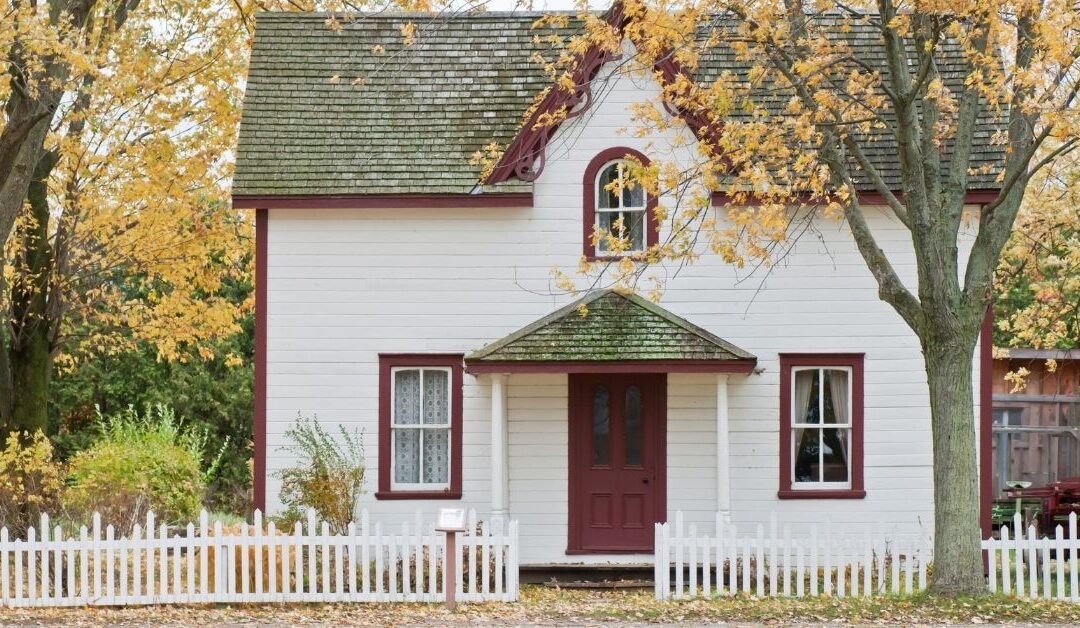Wondering whether to invest in student housing or multifamily housing?
You’re in the right place. In this article, I’ll give you the pros and cons of both so you can decide which is the best investment.
Sound good? Let’s dive in.
Should you invest in multifamily or student housing?
What is multifamily?
Multifamily is a form of housing where many different people live in separate housing units contained in one building. But it’s not just for families. A “family” could be a single parent, a young professional couple, a group of students, or a solo bachelor.
The defining factor is this: one building is split into multiple units.
Contrast this with single-family housing. Single-family means one housing unit in one building.
Now we’ve cleared that up, let’s talk about the pros and cons of multifamily investing.
Pros of multifamily
- Lower risk of having an empty property because of multiple rental units
- Multifamily is more scalable and therefore has a greater income potential
- It’s easier to raise the value of a multifamily property by lowering expenses and adding income streams (e.g luxury features like daycare spaces, bike storage rental, and so on)
- Multifamily properties tend to have longer rent contracts than student housing, which means longer-term stability
Cons of multifamily
- Multifamily properties are harder to manage than single-family
- It’s harder to get financing for multifamily properties than single-family properties (especially as a new investor)
- Larger properties require more maintenance
What is student housing?
Student housing is a residential property that you rent to students.
Housing for students comes in many different forms: apartments, residences, houses, dorms, and so on.
So, what is the difference between a student residence and apartment (or house)?
Well, student housing can be multifamily or single-family.
A student residence is a multifamily property where students live in their own contained housing units within one building.
A student apartment or house is classed as single-family. So as an investor, you own one space that rents to only one person or group of people.
As an investor, what are the benefits and drawbacks of student housing? Let’s take a look.
Pros of student housing
- You can rent student housing per room which means higher rental income
- Student housing is easier for new investors to get into
- One of the safest real estate investment opportunities
- Single-family student housing has a lower upfront cost than multifamily
Cons of student housing
- Renting to college can be a risk. You need to screen your tenants properly
- There’s a higher risk of having an empty property than a multifamily building
- Single-family rentals can be less scalable than multifamily
But even though multifamily is more scalable, you can still make a great return on single-family, while keeping your investment manageable.
Here are my numbers:
Should you invest in multifamily or student housing?
Well, remember, you can invest in student housing as multifamily or student housing as single family. So both options are available to you.
And as a new real estate investor, student housing has a ton of benefits.
But first, let’s compare multifamily investing to student housing investing.
Student housing vs multifamily: the numbers
Overall, student housing outperforms multifamily.
The data shows that from the end of 2022 to mid 2023, the average rental cost for student housing grew faster than rent prices for regular multifamily housing.
This is the first time that’s ever happened.
And you know what that means. More opportunity for investors in the student housing market overall.
Though the trend is expected to even out and slow down by 2025, there are other factors that influence the rise in demand for student housing over multifamily housing.
Here are the numbers:
- The cost of rental prices for student rooms went up by 7% in 2023 alone
- Experts suggest that the population between the ages of 18 and 24 will continue growing until 2050. This is the primary demographic for student housing.
- The NCES predicts that graduate enrollment will reach over 3.4 million by 2031. Many graduate students are international students who are more likely to seek student housing than dorm accommodation.
- Due to the growth in the number of students attending university, 33% of investors are interested in student housing as well as multifamily properties.
- Students prefer private rooms over dorms and multifamily units because they prioritize privacy.
- Student housing is one of the most recession-proof investments. College enrollments increased by almost 2.5 million during the 2008 recession. Contrast that with the downturn of multifamily housing demand after the pandemic recession in 2020.
- Student housing valuations are decreasing because of the high interest rates. But it’s decreasing at a slower rate than other property types, including multifamily properties.
So demand for student housing is rising and continuing to thrive over the coming years.
Next, we’ll talk about why single-family student housing specifically is a great first move.
Why invest in single-family student housing?
If you’re a new investor, I recommend single-family student housing.
Why?
For starters, demand for single-family housing is growing.
In fact, market data shows that demand for multifamily units was in the negative for late 2022 and early 2023.
Experts suggest that this downward trend post-pandemic is because of higher demand for larger spaces. So single-family properties with more individual spaces are on the rise.
Second, you need a lot more capital to get started with multifamily housing.
For conventional financing, you’ll need roughly a 15% down payment for a two-unit building. A three or four-unit building requires a 25% down payment or more.
With a single-family student house, you can get started with a smaller upfront investment, and therefore make a return quicker.
If you need to raise capital, you’ll also have more pressure to make a return fast with a multifamily property than with a single-family. That can be tough if you don’t already have a portfolio.
Not to mention, student housing can be challenging because students are typically new renters. So a single-family student home will be much easier to manage as a first-time landlord.
Overall, if you’re new to real estate investing, and want an easy way in, student housing is the way to go.
In this video, I talk more about how you can achieve financial freedom with just four single-family student homes:
So student housing seems to be a good move for new investors. But does that mean it’s the right move for you? Let’s talk about that next.
How to decide between student housing and multifamily
Your first investment is a huge decision. So when deciding between student housing and multifamily properties, consider the following factors:
- Location: The location of your investment property is crucial. Student housing should be close to universities or colleges, while multifamily properties can be in a broader range of neighborhoods.
- Investment horizon: If you are looking for a short-term, high-yield investment, student housing might be a better fit. If you seek long-term stability with longer rental contracts and consistent cash flow, multifamily properties may be the better choice.
- Risk tolerance: Student housing can be riskier due to higher turnover and potentially more management challenges. Multifamily properties, with their diverse tenant base and longer leases, often involve less risk.
- Landlord experience: If you’re new to being a landlord, single-family housing is much easier to manage as you’re starting out. Multifamily properties require you to manage diverse tenants’ needs and have a large budget for maintenance issues. That said, student housing can have challenges for landlords too if you don’t screen your tenants properly.
- Budget: Consider your budget and financial capacity. Student housing might be more accessible with a lower upfront investment, which is why it’s great for new real estate investors. Multifamily properties may require a larger initial capital investment but have a higher income capacity over time.
- Local regulations: Be aware of local regulations and zoning requirements, as they can impact your investment decision. Financial regulations come into this too. Depending on the size of your multifamily property, you might need a commercial property loan instead of a regular mortgage. Those require higher credit scores and tighter deadlines for turning a profit.
- Market analysis: In this article, I gave you plenty of stats on market growth. But it’s important to conduct thorough market research to assess demand and competition in the area where you plan to invest. This will help you make an informed decision.
Bottom line: If you have a big budget for a long-term investment and you can handle managing several housing needs, multifamily is a good option. If you’re new to real estate investing and want a low-upfront cost, simple-to-manage, fast turnover investment, single-family student housing is for you.
Next steps
There you have it!
If you want to learn more about how you can get started as a student housing investor and achieve financial freedom, check out my coaching services.
Read more:
How to Rent to College Students in 2023
The Student Housing Market in 2023
Student Housing Investment Returns: The Ultimate Guide (2023)


